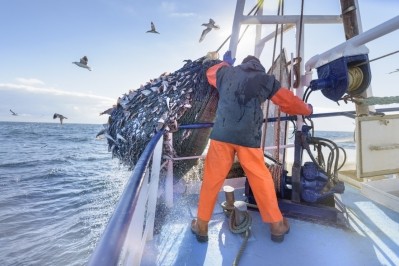‘100% traceable food is possible’: Blockchain-based platform developed for supply chain mapping, product traceability, and claim verification

The Trace platform was born out of a need for a ‘farmer-focused, impact-oriented, and consumer-facing’ way to track and trace in the food supply chain.
In the absence of such a product on the market, Fairfood decided to build one itself, the not-for-profit’s Tech Director Marten van Gils explained during its online product launch.
Together with industry partner Verstegen Spices & Sauces, Fairfood first leveraged blockchain to trace 50,000 units of nutmeg from Indonesia right through the supply chain to the Co-op supermarket shelves.
And most recently, Fairfood teamed with green coffee trading company Trabocca to trace the company’s supply from the Guji region in Ethiopia. A total of 278 coffee farmers participated in the project, which allowed Trabocca and its customers understand who grew the coffee, how much they were paid, and whether this amount was considered a ‘food price’ for that specific region.
The platform represents an ‘important step’, said Fairfood Director Sander de Jong, in moving the food system towards transparency, traceability, and with that, sustainability.
Developing a ‘virtual handshake’
Tech-focused Fairfood advocates to improve the socio-economic conditions of vulnerable people in our supply chain, including smallholder farmers.
“As a human driven NGO, we want to help people to uncover the human fingerprint on their food,” de Jong told online attendees. “We envisage a world where we can all enjoy good food and to do this, the food system needs to be sustainable and distributional value must be fair for all actors along the value chain.”
Yet for Fairfood, this is where it hits a ‘roadblock’. Farmers, de Jong said, are often too far removed from the process. “Often farmers do not even know what happens to the produce after they sell it.”
De Jong continued: “As consumers, we also face the same problem. We do not know what happens behind the scenes. As responsible consumers, and companies, we need to start thinking about those who are ‘behind the food’, because they are basically the engine of our food system.”
With technology, Fairfood says ‘100% traceable food is possible’. “What we really like about technologies such as blockchain is that it requires a ‘virtual handshake’…of data. And farmers, no matter how far away they are, can give their digital ‘thumbs up’ to verify important information.”
How does Trace work?
The Trace platform has three key functions: supply chain mapping, product traceability, and claim verification.
Firstly, concerning supply chain mapping and discovery, the company’s Tech Director explained that businesses are sure to know who they buy from, and who they sell to. Yet they may not know who their suppliers buy from, nor who their buyers sell to.
“Most companies don’t know who is in their chain. And for those companies, Trace helps them buy a series of transaction requests to discover their chain, all the way down to the farmer.”
The second key function is product traceability. “Once that farmer is reached, we can start tracing products,” van Gils told attendees. “Tracing products in Trace works by registering transactions.”
In the case of coffee, for example, a farmer will send coffee to the washing station, where it is converted into parchment, and then sent to the dry mill to become green coffee. The fruit passes down the supply chain, making numerous transactions, until it reaches the consumer.
“By registering these transactions, a trace starts forming. Within our platform, we attach the claims that companies make about their products to those transactions. Transactions are king, in Trace.”
Again, in Trabocca’s case, claims are verified when transactions are made – for example when a farmer received a ‘good price’ for their coffee, or when it has been organically produced. This also allows for the platform’s third key function – claim verification – which can be shared with partners and customers.
“By logging the core transaction and claim data in the supply chain on a blockchain, we create a decentralised, immutable, and therefore trustworthy data later that can be shared,” the Tech Director explained. “It allows you to safely share…with partners in the chain. And Trace works to share publicly, through its blockchain, these core data with everyone.”
Sharing value and predicted uptake
Ultimately, Fairfood says the process of registering data and connections creates value. Today, Trabocca can clearly show audiences, via its website, how much its farmers are being paid, as well as the physical journey the coffee goes on from farm to fork.
However, Trabocca’s commitment alone to sustainable practices is not enough. Traceability and transparency across the global food supply chains is the end goal, Fairfood suggested, predicting a rise in such solutions moving forward.
“Like any new technology, it takes time for people and infrastructure to adjust. However, just like we saw a rapid rise in certifications in the last 20 years, we expect a similar rise in traceability and transparency solutions, if not sharper,” noted the NGO.
“Almost every large food brand has started experimenting with blockchain enabled traceability since 2018. While traceability systems are not yet on a large scale visible in supermarkets, they are being developed ‘under the hood’.
“If current trends continue, we expect that the majority of sustainable brands and products will at least offer some form of transparent proof to stand by their storytelling in the foreseeable future.”



















